- Home
- D. H. Lawrence
The Rainbow Page 2
The Rainbow Read online
Page 2
The closeness of the animal world is linked, too, with the proximity of modern supposedly civilized existence and primitive life, suggesting that the distance between them may not be all that great. As such, this represents a defiant challenge to that Victorian grand narrative of belief in evolutionary progress. Whilst at college, Ursula reflects on the ‘inner circle of light in which she lived and moved’ (p. 435)—her family, her social and educational environment, the structures which formed her experience. This is the light thrown out by the modern world, ‘the light of science and knowledge’ (p. 435), an arc-lamp, the light of industrialism: a light linked with electricity, one of the powerful forces worshipped by the Futurist Marinetti, whose manifestos Lawrence had been reading in Italy at the time that he was working on the manuscript which in part became The Rainbow. Lawrence was intrigued by Marinetti’s hypothesis that an ‘intuitive physiology of matter’ might drive the individual, something which he claimed, in the letter to Garnett already quoted, was a more interesting idea to him ‘than the old-fashioned human element—which causes one to conceive a character in a certain moral scheme and make him consistent’.7 The linking of sexuality both with the modern, and also to an intrinsically powerful, even destructive natural force is shown in Lawrence’s vocabulary: in Lydia’s eyes, remembering passion ‘primitive and electric’ (p. 46); in the ‘darkness, passionate, electric’ (p. 214) where the relationship between Will and Anna flashes out; after Ursula first seriously kisses Skrebensky, she goes ‘to bed feeling all warm with electric warmth’ (p. 298); and when they have sex in the sand-dunes she—in a curiously phallic image, which rather obviously suggests where Lawrence located the most vibrant source of sexual energy—‘vibrated like a jet of electric, firm fluid in response’ (p. 475).
In his letter to Garnett, Lawrence’s argument would seem to be more with fictional conventions, especially the ones he found were still being used by such contemporaries as Arnold Bennett, John Galsworthy, and (perhaps a more surprising target) Joseph Conrad,8 than with the denial of an interest in establishing human characteristics. It is rather that—to quote Virginia Woolf, who shared Lawrence’s frustration with the first two of these novelists—’the proper stuff for fiction is a little other than custom would have us believe it.’9 For Lawrence, this involves asserting the power of intuition, and it is this atavistic consciousness which allows Ursula to sense that the inner circle of her world is no more than a jungle clearing, the arc-light no more than a camp fire, and outside there are ‘the eyes of the wild beast gleaming from the darkness, watching the vanity of the camp fire and the sleepers’ (p. 435). The predatory shadows are of wolves and hyenas: this ties their power in with that of Skrebensky on his return from Africa, who not only watches the trams and markets and theatres of Nottingham with the eye of a trapped spectator ‘as a lion or a tiger may lie with narrowed eyes watching the people pass before its cage’ (p. 447), but releases Ursula into an awareness of her own sexual power, rendering her ‘free as a leopard that sends up its raucous cry in the night’ (p. 447), enabling her to pass over the bounds of the circle of light that enclosed her.
Yet these ‘dark shadow-shapes’ (p. 436)—in one of Lawrence’s vertiginous tilts of perspective—the ‘dark shadow-shapes’ are also of the angels: ‘the angels in the darkness were lordly and terrible and not to be denied, like the flash of fangs’ (p. 436). This dual movement, with humans being pulled both towards the earth and their kinship with the rest of the natural world, and to a wider, less definable sphere of existence, is foreshadowed in the opening pages of the novel, describing the generations of Brangwens who have farmed the soil. Even in the unvoiced attitudes of these farm people, however, Lawrence suggests that there are gender differences in the ways in which their individual human boundaries merge with the world around them: ‘the limbs and the body of the men were impregnated with the day, cattle and earth and vegetation and the sky’ (p. 6), knowing their intimacy with the animal and vegetable world in their blood, and being content with this to the point of inertness, while the women looked out, straining to hear the debates taking place in a wider world, in ‘the far-off world of cities and governments and the active scope of man, the magic land to her, where secrets were made known and desires fulfilled’. These women looked to ‘the edge of the unknown’ (p. 7).
Lawrence here identifies yearning, the desire to go beyond one’s current bounds, with the consciousness of women. The decades covered by the novel, although stopping short of the most active period of suffragette activity, were notable for the expansion of opportunities for women’s education and employment, for the increasingly active role taken by women in public affairs, and for a questioning of the role of women in relation to marriage and maternity. Back in Poland, Lydia’s own coming into consciousness of her potential, which she recollects when talking to her young granddaughter Ursula, acts as a synopsis of this history (thus tacitly placing English social change in a broader European context). Initially, she had been just an adjunct to her intellectual husband:
She was to him one of the baser or material conditions necessary for his welfare in prosecuting his ideas, of nationalism, of liberty, of science.
But gradually, at twenty-three, twenty-four, she began to realise that she too might consider these ideas, (p. 255)
Circumstances intervene, and ambition seems to skip a generation. Although her daughter, Anna, experiences powerful moments of yearning, wanting, in socially unspecific terms, to ‘lift herself as a bird lifts its breast and thrusts its body from the pulse and heave of a sea that bears it forward to an unwilling conclusion, tear herself away like a bird on wings’ (p. 201), she is also kept earthbound by her love of the quotidian, and, above all, by her enjoyment in her fecundity, her breeding. This life repels her fastidious daughter Ursula, her grandmother’s true heir. Her grandmother’s presence and story open up a sense of space to her, the vertical space of history:
Here, from her grandmother’s peaceful room, the door opened on to the greater space, the past, which was so big, that all it contained seemed tiny; loves and births and deaths, tiny units and features within a vast horizon. That was a great relief, to know the tiny importance of the individual, within the great past. (p. 258)
In turn, the vision of the vast horizon stretches her own possibilities across the earth’s surface and away from the claustrophobic constrictions of Cossethay. By the sea at Scarborough, it seems to Ursula that ‘all the unrisen dawns were appealing’ to her soul ‘out of the far, far space’ (p. 431); later, when she prowls at the edge of the moonlit sea in Lincolnshire, this sea too is ‘tantalising her with vast suggestions of fulfilment’ (p. 477). The language of yearning here looks back to Romantic idealism in its fascination with the emotive power of distances. Shelley—whose poetry is read by Ursula in the novel, and was given by Lawrence to his girlfriend Jessie Chambers at Christmas 1905—writes in ‘Julian and Maddalo’ of the waste and solitary expanse of a sea coast, ‘where we taste | The pleasure of believing what we see | Is boundless, as we wish our souls to be’. It is this desire for the infinite which lifts the eyes and minds of the women of each generation from their immediate surroundings: ‘the human soul at its maximum’, writes Lawrence, ‘wants a sense of the infinite’ (p. 301).
As Ursula matures—from schoolgirl, through primary school teacher (an episode closely paralleling Lawrence’s own experiences whilst attached to the Pupil-Teacher Centre at Ilkeston in 1903–5), to university student, she comes into contact with those who are more explicitly aligned with organized feminism than she is: Winifred, ‘interested in the Women’s Movement’ (p. 341); her fellow teacher Maggie Schofield, with whom she discusses feminist issues; another student at Nottingham, Dorothy Russell, who ‘spent her spare moments slaving for the Women’s Social and Political Union’ (p. 430). But ultimately Ursula is shown as stronger and more independent than her contemporaries, part of Lawrence’s project of trivializing political movements and underestimating the pull and power o
f solidarity. The first two, in their different ways—through marriage and in the way they cope with their professional life—ultimately submit to precisely the cold, rationalistic, and mechanistic masculine power that Skrebensky also represents, and Ursula emerges as superior to him, too. Dorothy simply blends in with modern London. Lawrence’s point, however, seems to be that the spirit of freedom which the modern woman strives to express is stifled, rather than enabled, by political movements.10
Yet despite the central position granted Ursula, and despite the fact that Lawrence resolutely avoids a conventional romantic solution to the novel, with the young woman’s yearning being answered by an answering male need—no carrying out in practice of the archaic romances Ursula read as a girl—The Rainbow could not comfortably be called a feminist novel. In a work which privileges the energy which sparks from heterosexual relationships, woman’s singleness hardly seems a lasting option. Still less does the thought that woman might derive her lasting strength from relations, in the broadest sense, with other women. Although Lawrence does not invest the friendship between Ursula and Winifred with quite the distaste and condemnation with which he treats the lesbian couple March and Banford in The Fox (1918–21), nor does he show the disgust at the unnaturalness of the feminist woman that he later came to manifest in his essay ‘Cocksure Women and Hensure Men’ (1929), there is no question where Ursula’s and, through her, his own ultimate allegiances lie. Ursula can see the dead end which marrying Skrebensky and returning with him as a memsahib in India would entail: geographical change is figured, here, as leading to constriction rather than release as Lawrence offers a tacit critique of the ideology of Empire. ‘On the other hand, when she saw Dorothy, and discussed the matter, she felt she would marry him promptly, at once, as a sharp disavowal of adherence with Dorothy’s views’ (p. 473).
However, the future, the possibility of moving onwards and outwards at the end of The Rainbow, unquestionably does rest with Ursula, and with Ursula alone. Lawrence does not yet make his central woman character submit to what, in his last fictions, like The Plumed Serpent and Lady Chatterley’s Lover, he presents as the irresistible power of the phallus. The equivocation over the place of woman within this novel typifies the way in which The Rainbow quite deliberately evades the possibility of carrying away clear statements from it. In Chapter XIII, albeit in a slightly naïve tone which faintly ironizes Ursula, Lawrence writes of her sense that, in going out to work, she is starting to free herself:
But having more freedom she only became more profoundly aware of the big want. She wanted so many things. She wanted to read great, beautiful books, and be rich with them; she wanted to see beautiful things, and have the joy of them for ever; she wanted to know big, free people; and there remained always the want she could put no name to. (p. 404)
Lawrence refrains from supplying the name, even supposing that the desire is for a tangible concept, and not just for the principle of desire itself, and this is typical of the way in which the novel continually moves to resist closure and stability.11 The Methuen publicity announcement of the novel’s publication suggests the developmental pattern of a family saga (‘A history of the Brangwen character through its developing crises of love, religion, and social passion, from the time when Tom Brangwen, the well-to-do Derbyshire farmer, marries a Polish lady, widow of an exile in England, to the moment when Ursula, his granddaughter, the leading shoot of the restless, fearless family, stands waiting at the advance post of our time to blaze a path into the future’),12 but no such clear-cut progression governs the dynamics of feeling in the novel nor, indeed, the movement of Lawrence’s own style. Characteristically, Lawrence begins sentences with ‘And’ or ‘But’, giving the prose of The Rainbow its distinctive motion of conjunction and division, a pattern which is endlessly repeated in the human couplings and emotional withdrawals.
In particular, this resistance to closure is figured throughout, as I have already remarked, by the way in which the novel’s imagery deliberately exploits ideas of structures and of space. These structures are on occasion conceptually linked to the limitations of language. Plenitude of meaning, an adequate expression of the intensity of feeling, continually seems to lie just out of reach, and this fascinates and frustrates both Lawrence and his characters: a frustration best conveyed when the young Anna seeks to escape the circle of her parents through a variety of means, including church-going. ‘But the language meant nothing to her: it seemed false. She hated to hear things expressed, put into words’; and her sense of crampedness, of the inadequacy of language, brings often to her mind the ‘torture cell of a certain Bishop of France, in which the victim could neither stand nor lie stretched out, never’ (p. 104). A kind of release is offered by Will: ‘In him the bounds of her experience were transgressed: he was the hole in the wall, beyond which the sunshine blazed on an outside world’ (p. 112). In turn, Skrebensky, whatever his eventual defects, opens up an emotional landscape to Ursula: ‘He brought her a strong sense of the outer world. It was as if she were set on a hill and could feel vaguely the whole world lying spread before her’ (p. 288).
In mapping the geographies of human limits, in showing the tininess of the individual within what Tom Brangwen sees as ‘this roaring vast space’ (p. 133) of the universe, Lawrence continually uses such tropes of enclosure and containment, giving way to thresholds and doorways and arches, which, when stepped through, result in the individual’s empowerment. Alternatively, the door may only open onto a sterile landscape: the disillusionment Ursula feels with her university education is figured through a sequence of vistas that promise and then disappoint:
Always the shining doorway ahead; and then, upon approach, always the shining doorway was a gate into another ugly yard, dirty and active and dead. Always the crest of the hill gleaming ahead under heaven; and then, from the top of the hill only another sordid valley full of amorphous, squalid activity. (p. 434)
Her disenchantment is reflected, too, in the sham, spurious Gothic architecture of her surroundings, the Ruskin-influenced buildings of University College, Nottingham, a mockery of the true power of that medieval architecture which John Ruskin had praised for its vitality, individualism, and repudiation of the mechanical. Such power is displayed by the leaping stone arches of Lincoln Cathedral, which offer a ‘meeting and the consummation, the meeting, the clasp, the close embrace, the neutrality, the perfect, swooning consummation, the timeless ecstasy’ (p. 200). This sexualized stonework is celebrated by Will, yet it still represents a kind of enclosure, of roofing-in for Anna. One person’s enabling space is another’s confinement.
Yet in the symbolic logic of the novel, apparent confinement can prove a forging place of character: thus the ‘shell’, the ‘prison’ of the school at which Ursula teaches comes, in time, to be a ‘prison where her wild, chaotic soul became hard and independent’ (p. 405). By analogy, even the most tightly closed bud contains the potential for growth: within each seed, even, leaf and root and flower is folded. The same strand of imagery, in turn, allows Lawrence to express Will’s consciousness of the unripe buds, the ‘folded centres of darkness which would never develop and unfold’ within him (p. 208). None the less, he retains some capacity for organic growth, ‘blindly, like a mole’ pushing his way out of ‘the earth that covered him … the physical element in which his life was captured’ (p. 353), to work first on his own creative enterprises, and then to seize the social opportunities which open up for him within craft education. Only those who are irrevocably enclosed, as the miners of Wiggiston are trapped within a hard, ‘utterly unliving shell’ (p. 344) of ugly industrialism, are completely doomed.
The novel concludes with the image that gives it its title: the rainbow, arching indomitable over the Midlands landscape. Ursula sees in this rainbow ‘the earth’s new architecture, the old, brittle corruption of houses and factories swept away, the world built up in a living fabric of Truth, fitting to the overarching heaven’ (p. 494). This ending encapsulates the novel’s s
trengths and weaknesses. The rainbow itself brings with it biblical authority: it is God’s covenant of mercy, his token of the hope and renewal that will follow devastation. Even without being charged with typological significance, it is a reminder of the recurrent presence of natural beauty, available to all. Ruskin—aptly, given that he serves as a reference point in the establishment of mid-Victorian aesthetic and spiritual values in this novel—remarked that ‘I much question whether any one who knows optics, however religious he may be, can feel in equal degree the pleasure or reverence which an unlettered peasant may feel at the sight of a rainbow’.13 In keeping with the pervasive architectural imagery, this coloured arc offers a triumphal archway, a natural version of Gothic vaulting, through which Ursula may step to her unknown, open future.
Yet rainbows are short-lived. Ursula may experience this one with the force of an epiphanic revelation, but similar moments of revelation coming with startling clarity have occurred earlier in the novel, and have proved no more lasting than this meteorological phenomenon—take, for example, the pregnant Ursula’s conviction that it was a woman’s place to submit to childbearing, the task for which her body fits her, and that feeling this expressed ‘her true self, for ever’ (p. 484). More than this, the optimism generated by the rainbow may be splendid in terms of the soul, but it offers conspicuously little by way of constructive social or political suggestion. It fails to suggest how the spreading blight of urbanization and mindless industrialism may be diverted in a direction more amenable to Lawrence’s insistent demand that one does not lose touch with an urgent, quickened, feeling sense of one’s own individual physical, sensuous, and simultaneously spiritually aware being. There is a foreshadowing in this conclusion of Lawrence’s later, more extremely stated political views, such as his claim that the ‘human soul needs actual beauty even more than bread’.14 In this maxim, he ignores the fact that drives so many of the powerful conflicts within The Rainbow: the inseparability of mind and matter.

 Look! We Have Come Through!
Look! We Have Come Through!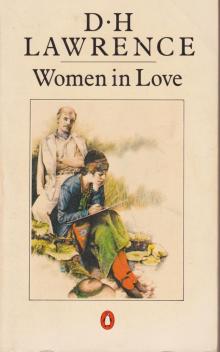 Women in Love
Women in Love The Ladybird
The Ladybird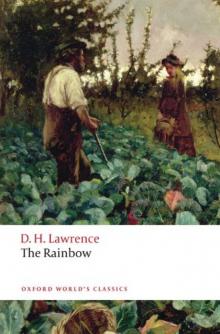 The Rainbow
The Rainbow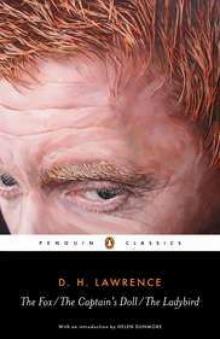 The Captain's Dol
The Captain's Dol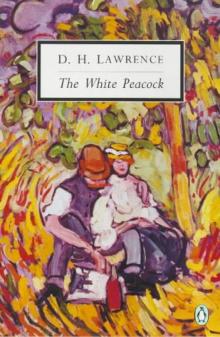 The White Peacock
The White Peacock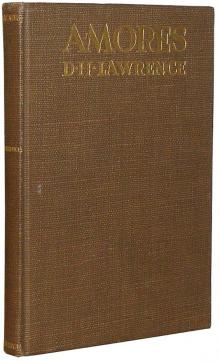 Amores
Amores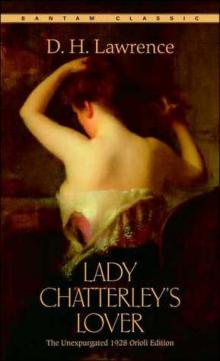 Lady Chatterley's Lover
Lady Chatterley's Lover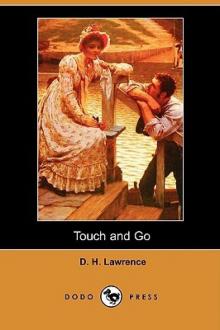 Touch and Go
Touch and Go The Wintry Peacock
The Wintry Peacock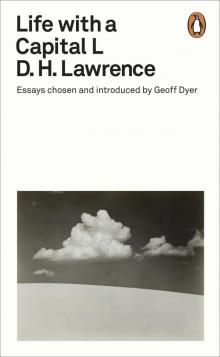 Life with a Capital L
Life with a Capital L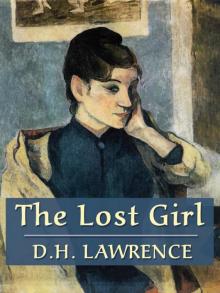 The Lost Girl
The Lost Girl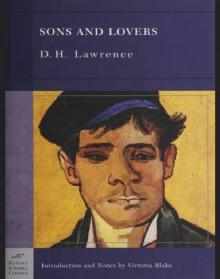 Sons and Lovers
Sons and Lovers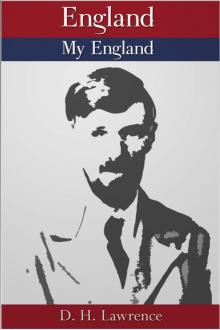 England, My England
England, My England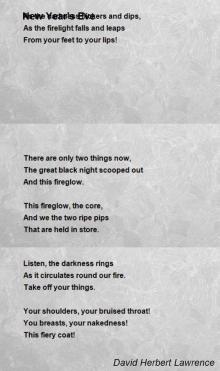 New Poems
New Poems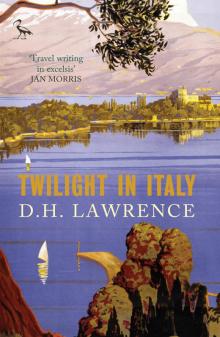 Twilight in Italy
Twilight in Italy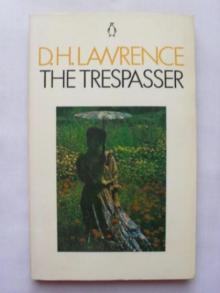 The Trespasser
The Trespasser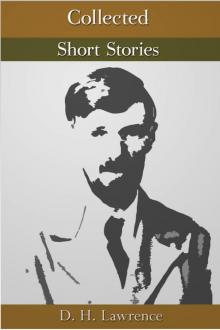 The Collected Short Stories
The Collected Short Stories The First Lady Chatterley's Lover
The First Lady Chatterley's Lover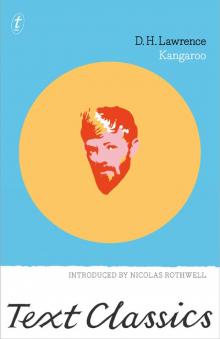 Kangaroo
Kangaroo Bay
Bay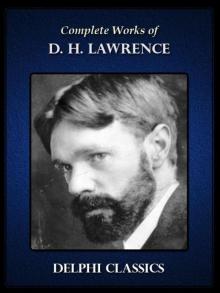 Complete Works of D.H. Lawrence
Complete Works of D.H. Lawrence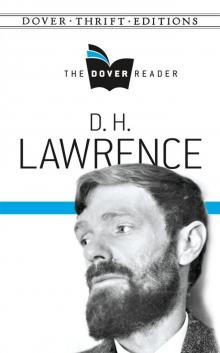 D H Lawrence- The Dover Reader
D H Lawrence- The Dover Reader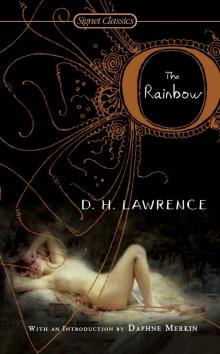 The Rainbow (100th Anniversary ed.)
The Rainbow (100th Anniversary ed.)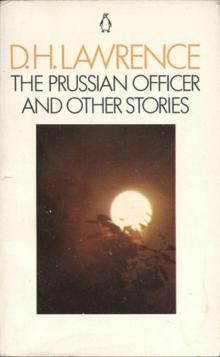 The Prussian Officer
The Prussian Officer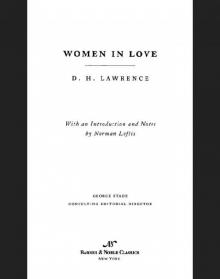 Women in Love (Barnes & Noble Classics Series)
Women in Love (Barnes & Noble Classics Series)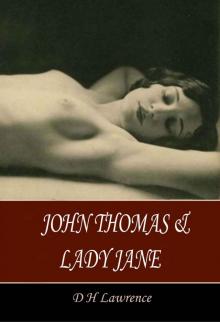 John Thomas and Lady Jane
John Thomas and Lady Jane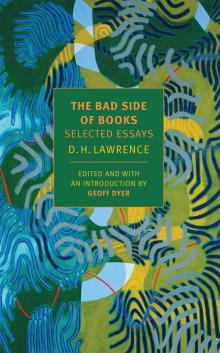 The Bad Side of Books
The Bad Side of Books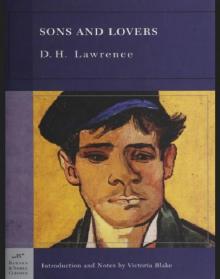 Sons and Lovers (Barnes & Noble Classics Series)
Sons and Lovers (Barnes & Noble Classics Series)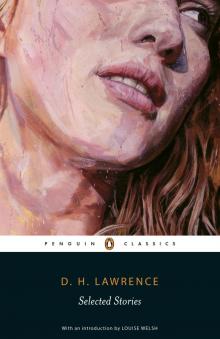 Selected Stories
Selected Stories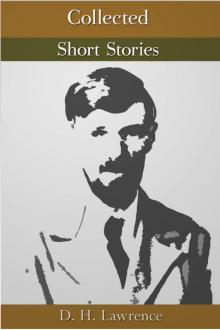 Collected Short Stories
Collected Short Stories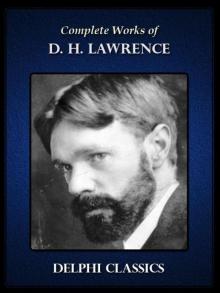 Complete Works of D.H. Lawrence (Illustrated)
Complete Works of D.H. Lawrence (Illustrated)